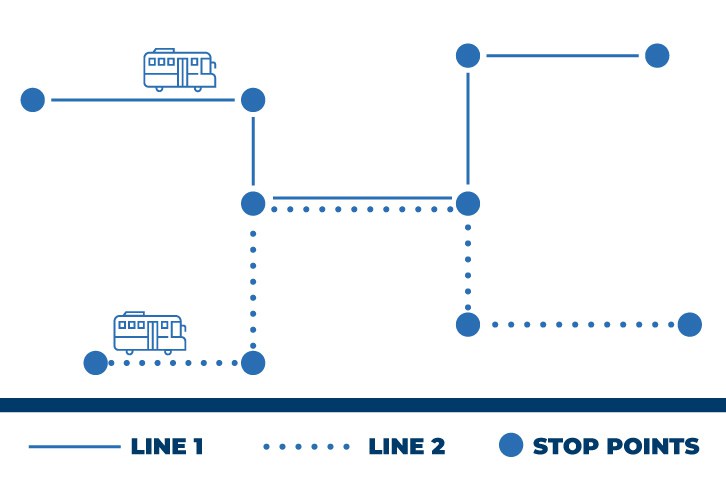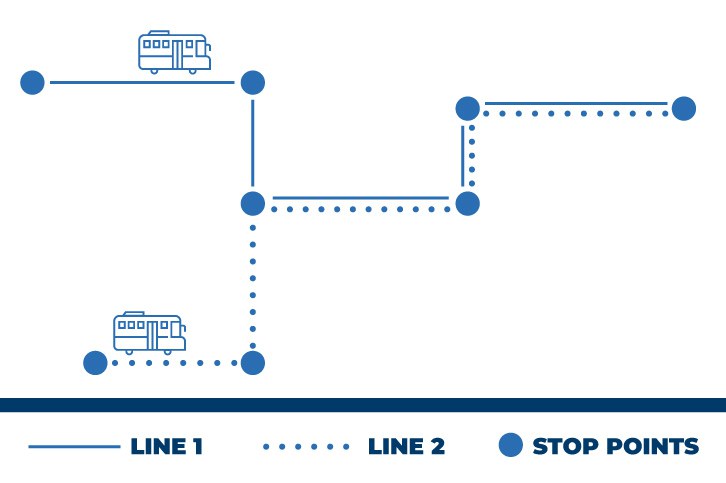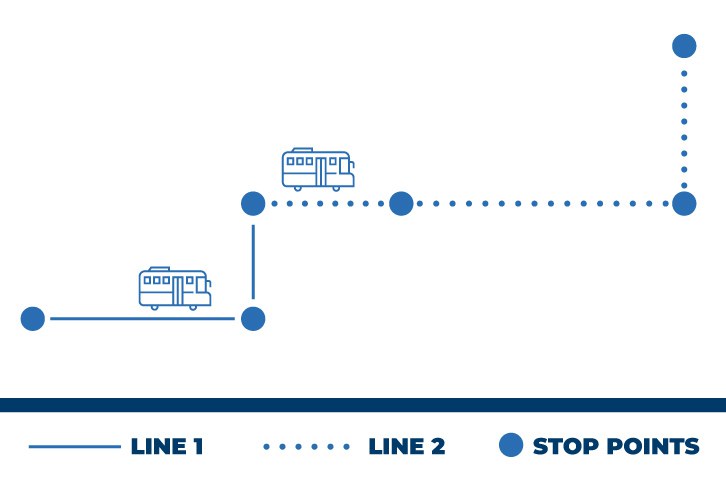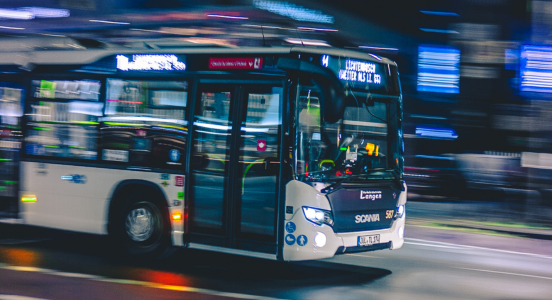Timetable Optimization for Multiple Lines: 3 Case Studies
In this article, we will see how to optimize timetables for public transport services operating multiple lines, trying to best meet passenger needs, and how the management of passenger transfers can improve the service and reduce operating costs.
In the article “Timetable Optimization in Urban Corridors”, you learned how the MAIOR Transit Scheduling Suite optimizes timetables in urban corridors, using the advanced embedded MAIOR algorithm.
In this article, you’ll learn 3 practical cases of the use of the algorithm for multi-line timetable optimization:
Case 1: Regularization of frequency between vehicles
Urban line + Urban line
In this first case, we address the optimization of timetable schedules on multiple lines that have common routes, aiming to regularize frequency among vehicles.
First, the algorithm is adequately configured, defining the running times of the lines to be used, and then defining the minimum and maximum dwell times and the stop points.
The algorithm for schedule optimization works out a solution for the two lines, in which on the shared network section for both lines, vehicles pass with the same headway.

Case 2: The alternation between different lines
2 Lines
In this second case, we deal with balancing the arrival trips on multiple terminuses. That is the use of the multiline algorithm by balancing the solution of the algorithm on lines that arrive at different terminuses but run on a shared corridor.
The goal is to create an alternation whereby the 1st trip belongs to one line and the next trip belongs to the second one.
In this section, it is important to define the trip patterns, that is, defining what is the alternation of routes to be used on one line and on the other.
The user also has the ability to define what the alternation of vehicles in the route will look like. For example, to define at a given point in the network to have for every vehicle passing of one line, two vehicles passing of the other.

Case 3: Trips to support of other lines’ trips
Main line + Secondary line
In the third and final case, we look at trips that operate to support others, like suburban or rail trips, and how one line can have trips that operate supporting another line’s trips.
To define these ‘feeder trips‘, it is needed to correctly define interval times.
This timetable solution makes it possible to define, in view of improving passenger experience:
-How many minutes before the first trip’s arrival does the feeder trip’s vehicle needs to arrive
-How many minutes after the first trip’s arrival the feeder trip should depart.


